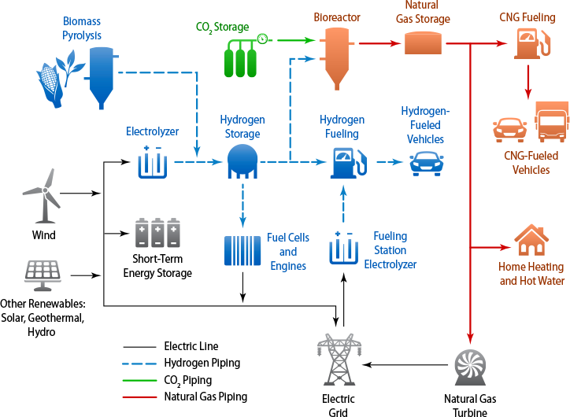
Many fuel cell products are available today and they are becoming a commercial option
The most commercially advanced application is in forklift trucks for large 24/7 warehouse operations or in cold store situations, where batteries do not work well. They have a higher capital cost than the conventional lead acid batteries that are widely used, but a significantly lower operating cost.
Fuel cell cars are available in the UK from Toyota, Honda and Hyundai. Their numbers are limited as producers have not yet invested in large-scale, low-cost manufacture but we can expect this to happen within 5 years. This will also give time for a hydrogen refuelling infrastructure to be developed. Vans, buses and vehicles like refuse trucks are a good near term application as they often return ‘back to base’ on a daily basis. This provides a better investment case for a dedicated refuelling station.
Another near term application is large-scale, commercial combined heat and power (CHP). Although they use natural gas like conventional CHP units and produce CO2, they are cleaner in operation and more efficient on a total electricity and heat basis. This is a good option where local air quality is a concern.
Larger HGVs, trains and ships are also being developed with hydrogen fuel cell power. The high energy density of hydrogen provides an option to electrify these modes of transport.
Over time, we will transition to an integrated energy system with hydrogen as the key energy carrier
Long-term
We have benefitted hugely from a convenient source of energy stored in the forms of coal, oil and gas but in the future, we will need to capture almost all our energy directly from the environment and either use it immediately or create some means of storing it for later use. In particular, we will need an alternative energy carrier to replace the coal, oil and gas that we are so used to. This carrier will need to be easily produced from renewable electricity, stored for long periods in large quantities and transported to where it is needed. This “new” fuel is hydrogen, produced by electrolysis using the effectively infinite supplies of renewable energy and water. The energy system will look very different to today. Energy generation will be much more distributed and there will be much more integration between production, storage and end use and many different technologies will be involved.

Near Term
Over the next 50 years or so, we will transition to this more sustainable situation. We are already facing the challenges of balancing supply from renewables with demand at any point in time. In this period, we need to make sensible choices about how we store energy. For small amounts of storage, batteries are ideal but at larger scale and for longer periods of time, storing energy as hydrogen makes sense. It can be used directly for heat and electricity, as a transport fuel and can be distributed easily by pipeline or in the existing gas network.
